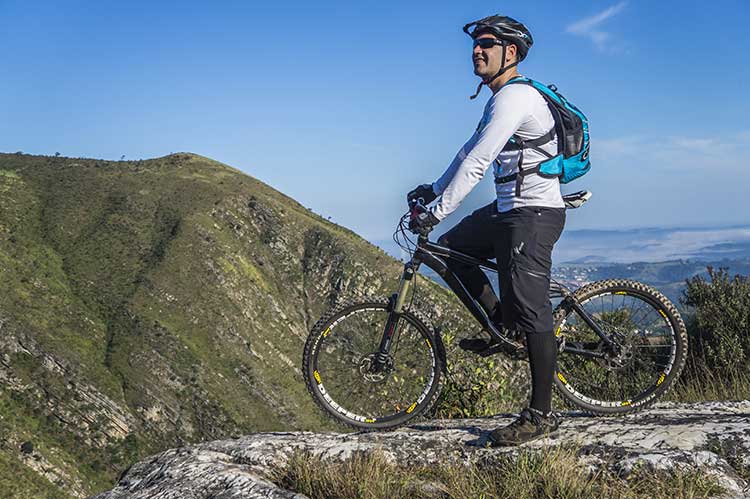Cycling accidents occur more often than you think. The Centers for Disease Control and Prevention reveals that in the US alone, more than 130,000 people incur injuries from road accidents each year. This figure affects cyclists: we’ve previously noted that falls and collisions are the highest risk factors on the road when cycling because they can lead to fatal injuries. But did you know that cycling accidents can impact your eyes, as well?
Research on ocular injuries linked to riding motorcycles and e-bikes found that the risk of suffering eye injuries was 2.4 times higher without protective gear. Your eyes are exposed to many risks when you bike, from small particles like dust that could irritate them to the harmful effects of ultraviolet (UV) light. Without proper protection, your eyes are vulnerable to potential road accidents and may even acquire problems like age-related macular degeneration or cataracts from UV exposure. Here’s how you can avoid eye injuries when cycling:
Wear the right helmet
Wearing a helmet prevents serious head damage from road accidents, but the right type can also protect your eyes from hazards. When you’re out cycling, foreign bodies like dust can irritate the eyes. This can cause corneal abrasion or the scratching of the eyes’ clear membrane, which could lead to discomfort, watery eyes, and possible infections. Consider using a helmet with built-in visors to shield your eyes from small debris or insects when you hit the road. That way, you can enjoy cycling without the risks of small particles entering and scarring your eyes.
Wear polarized cycling sunglasses
Cycling exposes you to harmful UV light that can do more than just increase your long-term risk of losing your eyesight. It can also cause photokeratitis, a painful eye sunburn that can temporarily blind you and render you vulnerable to accidents on the road. That’s why you should buy cycling sunglasses with a “UV 400” label to ensure 100% UV protection. However, preventing photokeratitis requires more than blocking UV rays: the condition is mostly caused by sunlight bouncing off reflective surfaces like windshields, wheel rims, and windows. Investing in polarized sunglasses is thus crucial for preventing cycling accidents. These block light horizontally to prevent glare, which is why they’re recommended for use while driving. The same logic applies to cycling sunglasses, so be sure to pick up polarized models like the Oakley Flak 2.0 before your next ride.
Maximize bike visibility
Putting front and rear lights on your bike will be especially helpful for cycling at night. With them, you can better see any hazards on the road, such as pedestrians, approaching vehicles, and hanging branches from trees that can hit your eyes. They’ll also tell other motorists that you’re nearby, preventing collisions that can also impact your eyes. Research shows that cyclists who use running lights for bikes have a 19% lower crash rate, so buying some for yourself is ideal. For optimum visibility, you try the Portland Design Works City Rover 700 USB Headlight. It features longer battery life compared with other lights of a similar price point. You can also opt for the Cygolite Hotrod 120 USB tail light, which houses 20 extra-bright LEDs to make you stand out and visible from afar.
Avoid wearing earphones
Aside from being visually aware of your surroundings, it’s also important to make sure that your auditory senses are not compromised while you’re cycling. Avoid wearing earphones, earbuds, or headphones to listen to music while you’re on the road. When you’re able to hear everything in your immediate surroundings, you can avert possible collisions that can impact and severely damage your eyes.
Eye injuries are common when you do physical activities like cycling. Knowing how to protect your eyes from possible risks can greatly benefit your riding experience and overall health.
No products found.

















